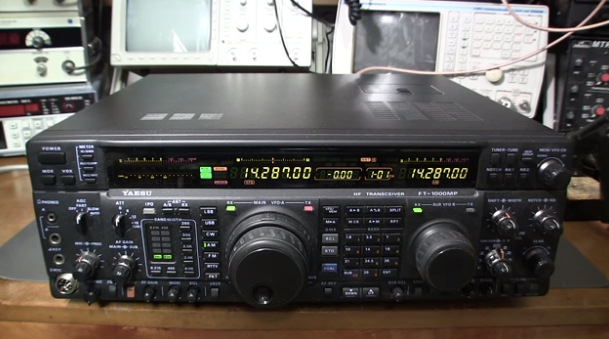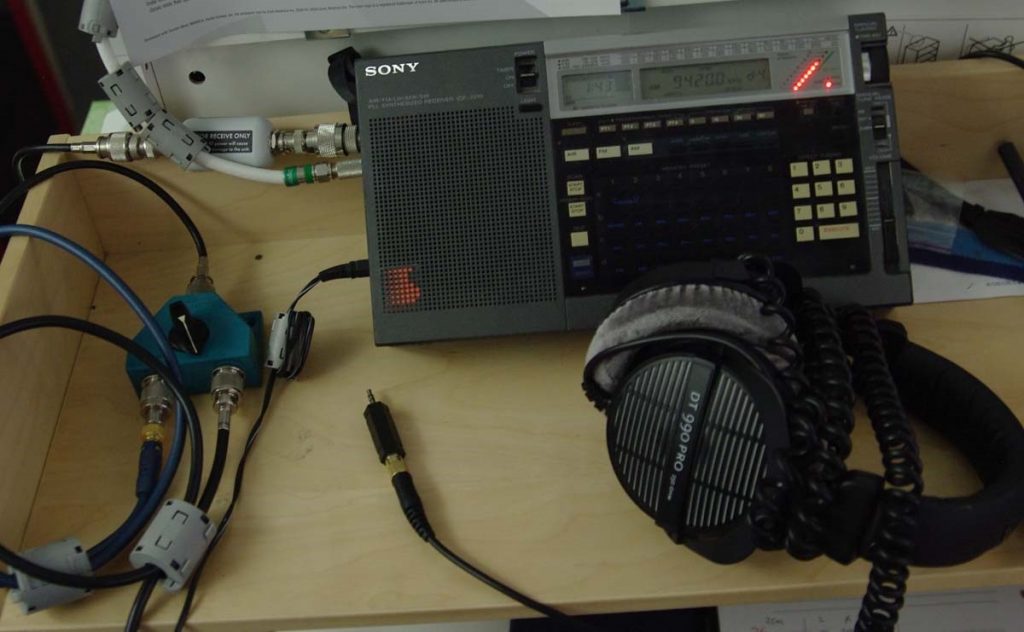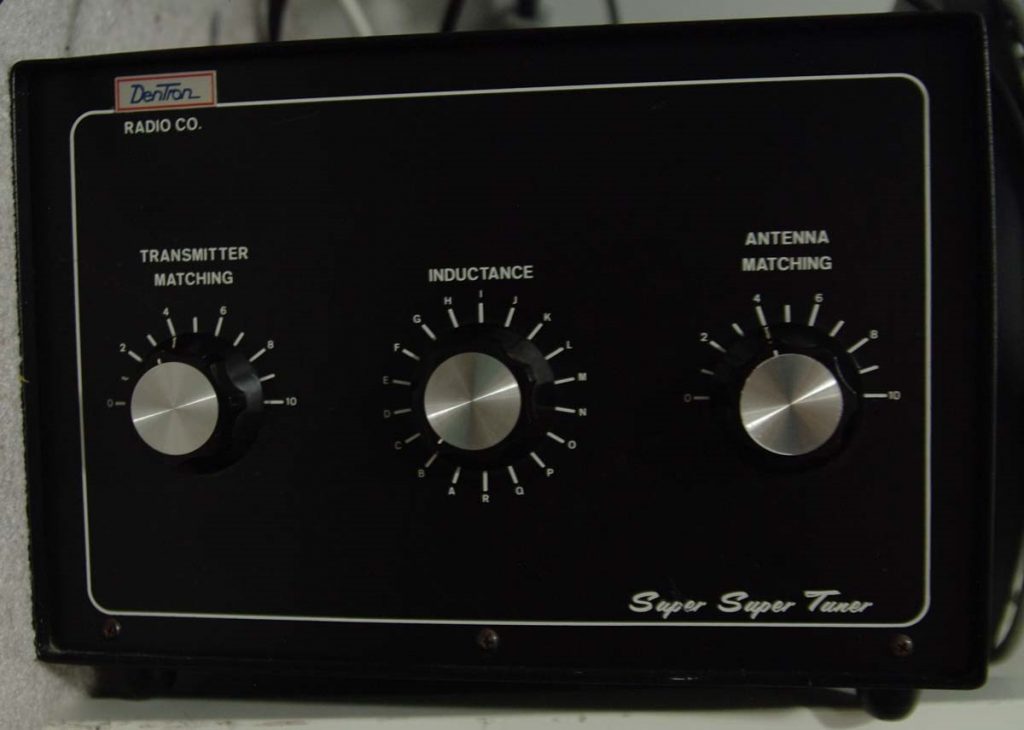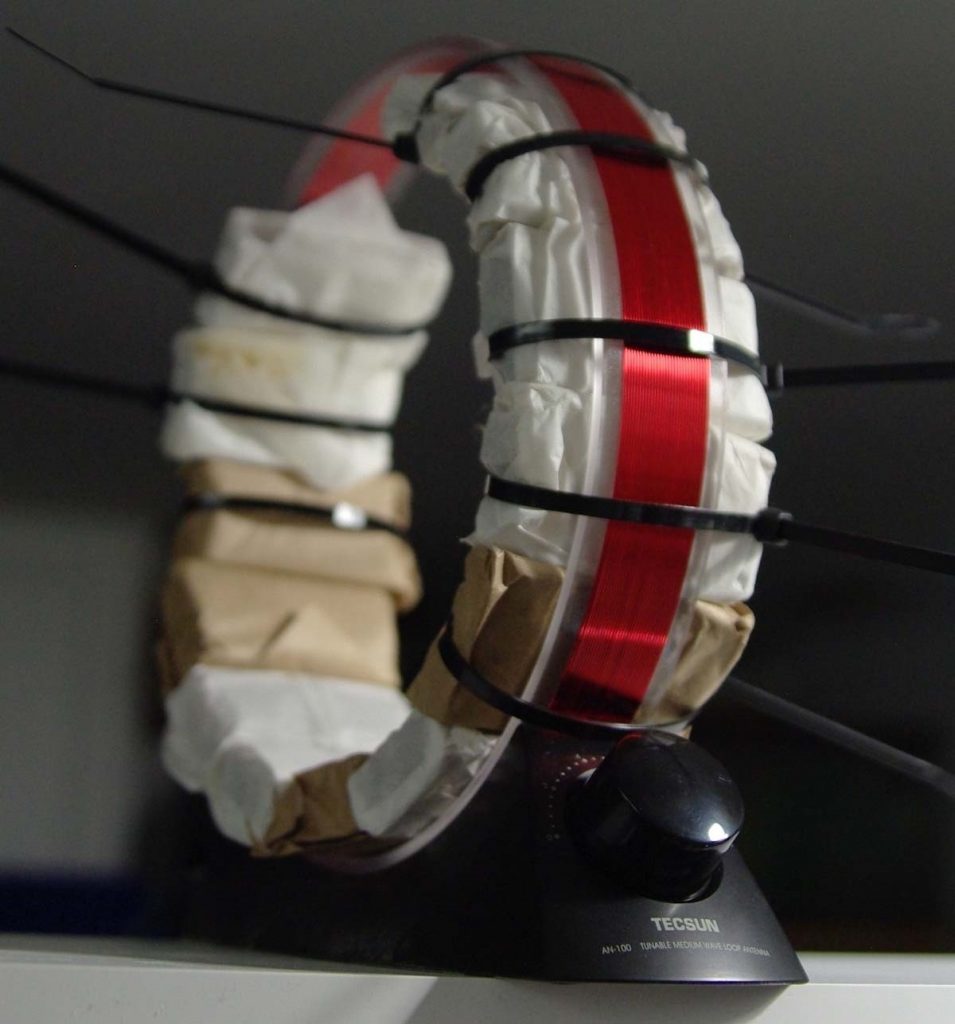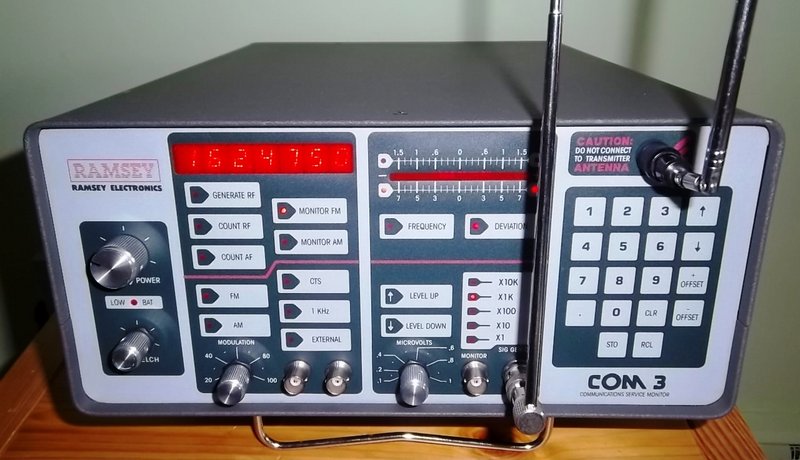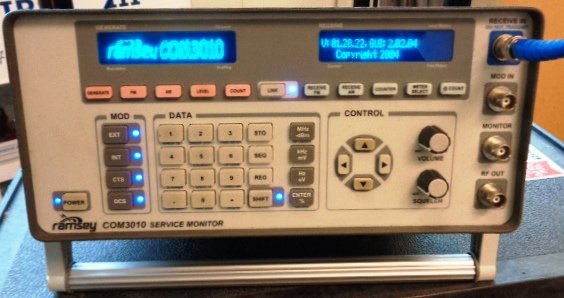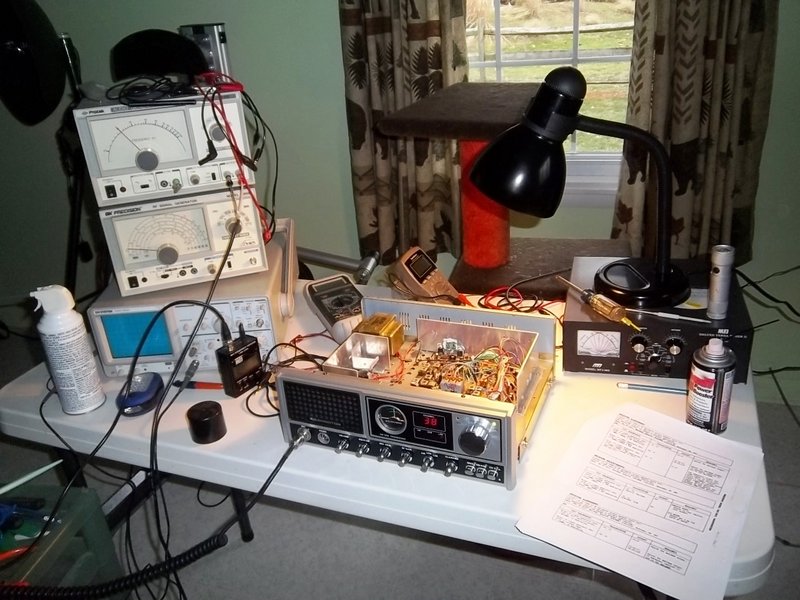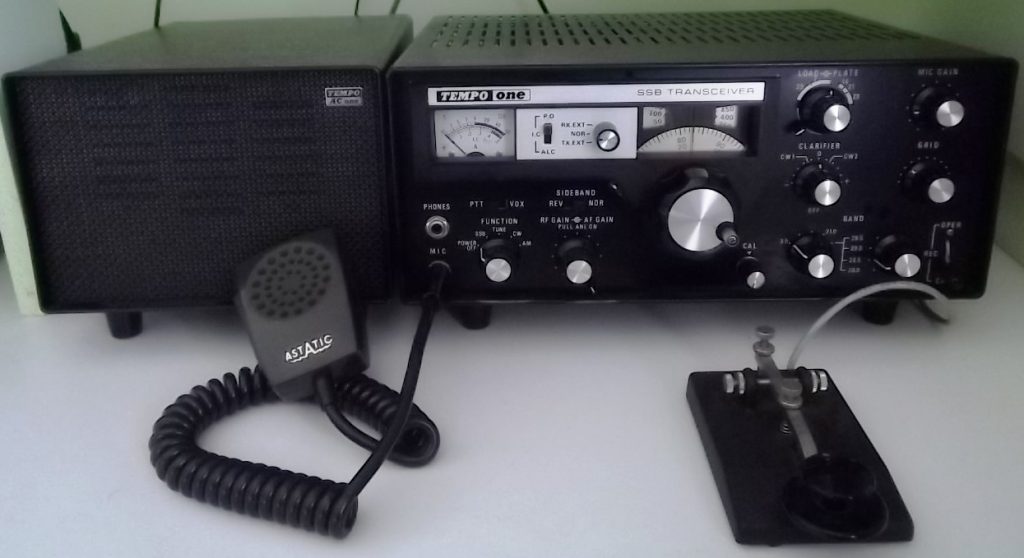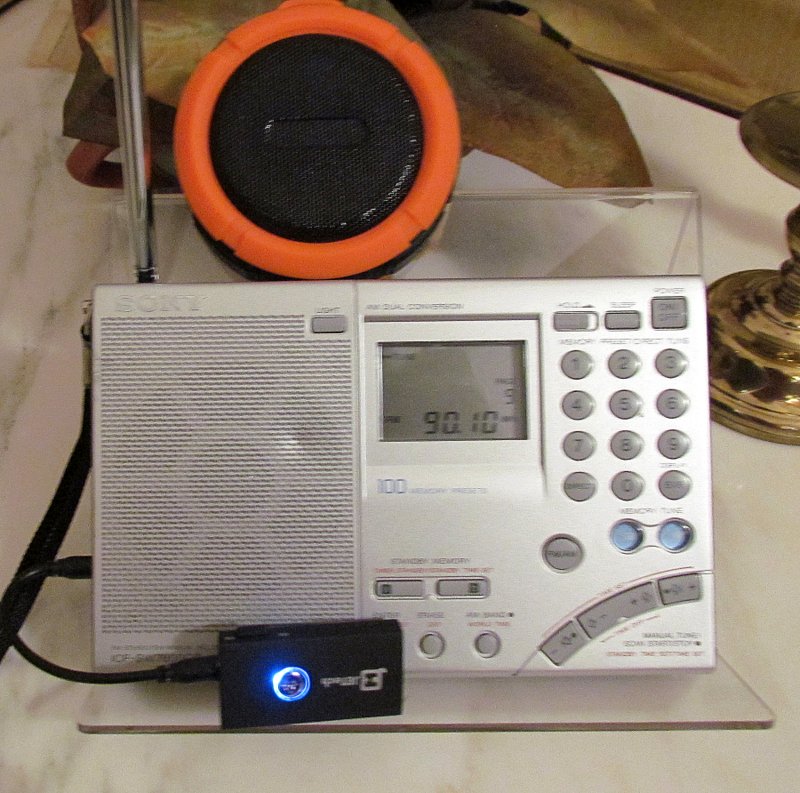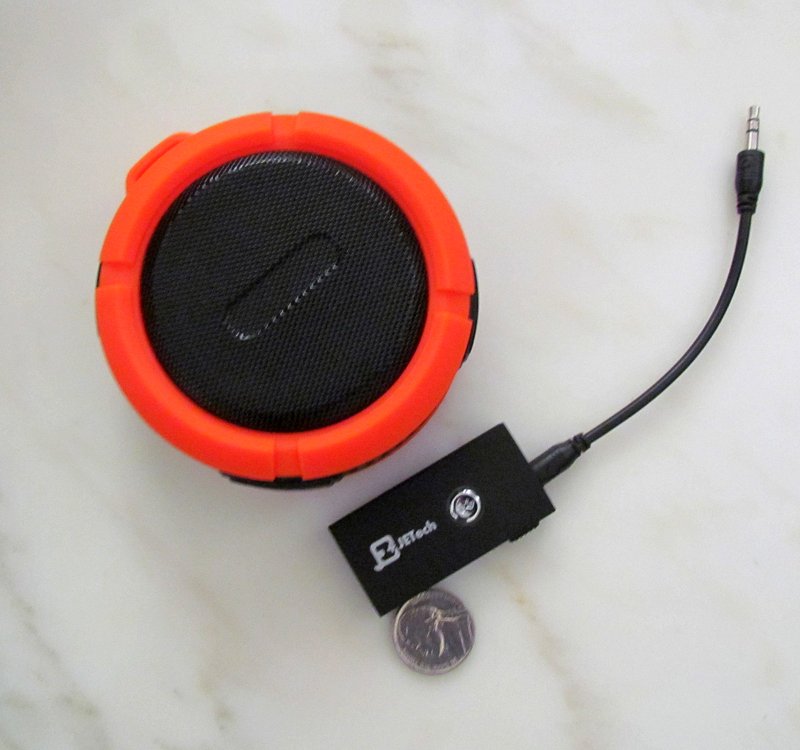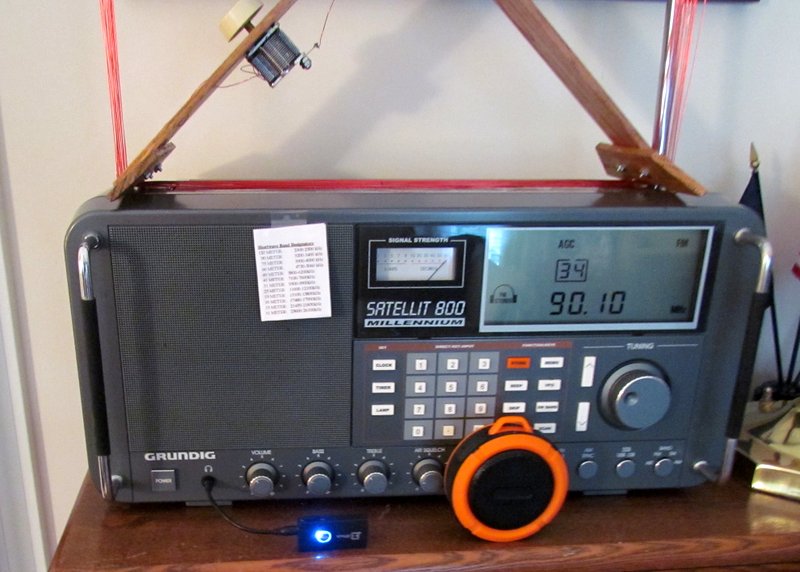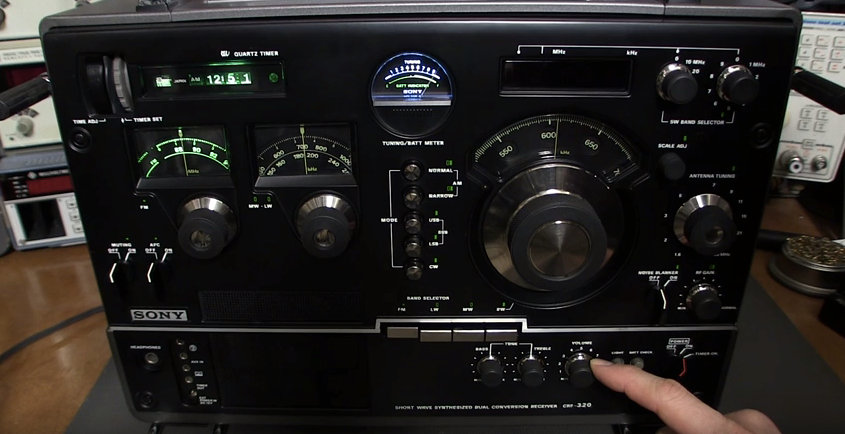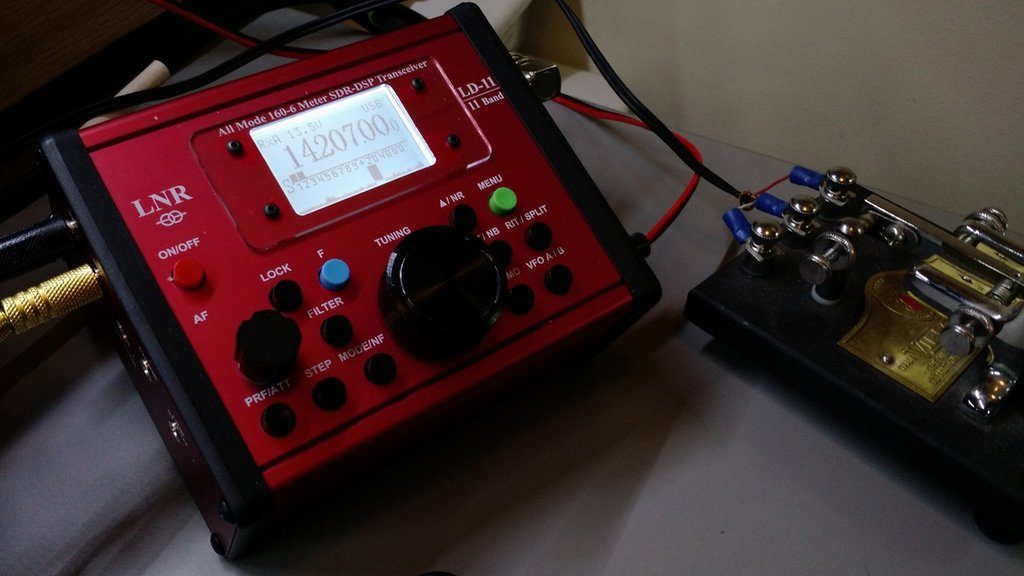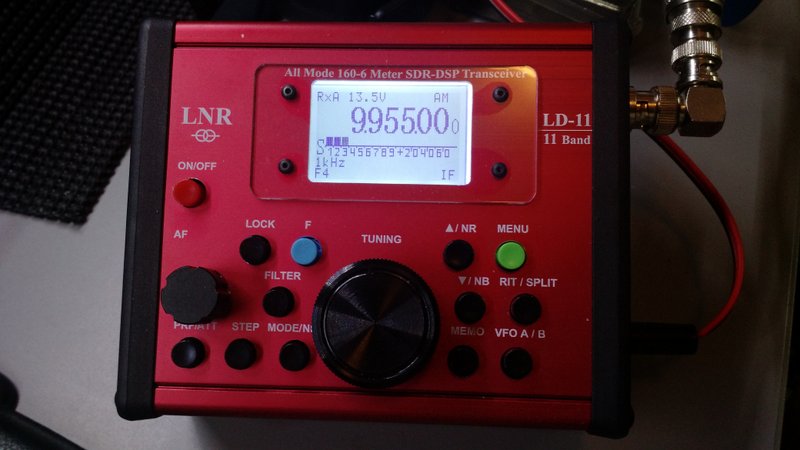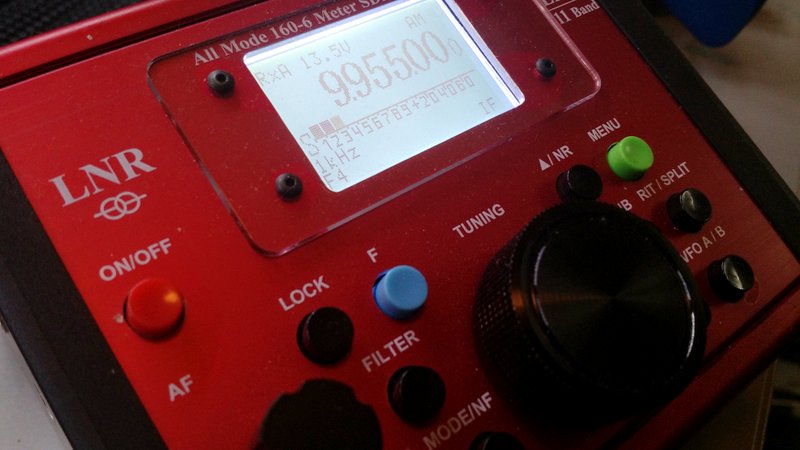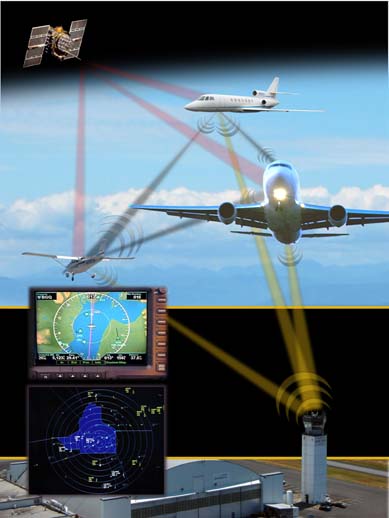Remember Mr. Carlson’s excellent video of the Sony CRF-320 restoration? Many thanks to SWLing Post contributor, Ken McKenzie, who shares a link to the latest Mr. Carlson video–a Yaesu FT-1000MP repair:
Category Archives: How To
Guest Post: My Evolving, Morphing, SW Listening Station
Many thanks to SWLing Post contributor, TomL, for the following guest post:
My Evolving, Morphing, SW Listening Station
by TomL, May 26, 2016
My interest in radio listening has been rekindled after a long hiatus in parallel to my dwindling interest in Mainstream Media. It is now about 8 years without cable TV and I seriously do not miss it, especially with the evolving nature of discovery with respect to other forms of media. SWL radio was important to me in my formative years during the Cold War; fascinating were the many ways governments used shortwave radio to influence populations, each with their own brand of propaganda! Young people today know nothing about the endless (and entertaining) tirades of East German editorial commentaries denouncing the evil, decadent West. Or, of the free, large-sized envelopes full of travel and promotional brochures, pennants, bumper stickers, and booklets sent from the government broadcasters such as Poland, Hungary (yes, communist countries!), Australia, Netherlands, etc. just for sending in one simple QSL report!!!
I quickly realized that those days are gone forever, consigned to a period of history where radio was THE main method of disseminating copious amounts of government propaganda to very large swaths of humanity. Now, the internet and cable TV fulfill that function in a much more CONTROLLED manner, both technically and socially (Big Brother like). So, I have diversified my interests and have an unusual listening station. It is multiple things in one small space. You see, I live in a very small condo in a noise-plagued environment with only a 2nd floor wooden deck (owned by the Condo Association!) in which to put up any outside antennas. Only a single “Dish” type antenna is allowed. So my shortwave antenna needs to be well hidden. Same for the TV antenna, since I also have a north-facing deck, I cannot have any line-of-sight to the Southern sky for a Dish.
The first wire antenna strung from the top and brought inside was a dismal failure receiving nothing but noise. I gave up for a couple of years. I built a loop TV antenna and mounted an FM antenna instead since those were less susceptible to noise issues. Also recently added to this station are two cheap 4G antennas with wires into a single Verizon USB aircard plugged into my computer and getting up to 14 mbps performance.
But, I still wanted to try shortwave radio again (and medium wave too) but the noise issues were very, very discouraging. S9 noise on some bands. Tried preselector, a noise “phaser”, different lengths. Nothing worked. However, I read something from an amateur radio operator in Northern California who had a space problem. He put up a helically-wound-vertical (HWV) antenna with radials for 160 meters (John Miller HWV antenna). I also read about various “broomstick” antennas. So, I tried my own version with an old RF Systems Magnetic Longwire Balun I still owned and NO radials. Put it together with a 2 foot long, 4 inch schedule 40 PVC pipe wrapped in 200 feet of 18 awg magnet wire. Well, still noisy but, at least now I had a portable antenna!
So, I went camping in March of this year! Holy Cow, was it cold out but the helical antenna performed well enough to hear All India Radio for my very first time, a small 1kw Mexican station in the 49 meter band, and various others from Asia that were elusive for me in the distant past. I was finally encouraged again to continue my research. I did this a few more times and finally got tired of going camping just to listen to a radio! NOISE at home was still the big bugaboo to kill (and it still is).
I read up on Common-mode noise travelling on ground and shield components of antenna systems. So I bought a bunch of toroid ferrites of different types to cover different frequencies (something about initial permeability….) to make my own homemade “Super RF Choke” to cover all frequencies made on a Home Depot Homer bucket lid, winding the coax 5 or 6 times through all the toroids, the full diameter of the lid.
Measurements by Jim Brown published on the web (RFI-Ham.pdf), pages 32-33) indicate good choke performance using coax with these larger-sized coils. I still hoped to salvage the use of the HWV antenna. So, added the choke and noticed some improvement across most bands (less noise). Medium wave broadcast was not effective and decided that I did not want to keep tuning an antenna that HAD to sit outside to get away from the noise inside my listening station.
I also shut off the power to my condo and found out which noise sources were mine vs. other noise that came from all the neighbors (very important step to do!!!). For instance, I did not know before that USB charging adapters are PURE RF-NOISE EVIL in an innocently small package?!?!?! I rearranged wiring to shut off certain devices and power strips when I want to listen to the radio!
So, I kept reading. Found out about another magnetic balun from Palomar. Tried it but not impressed – performance was too lossy compared to the good old RF Systems MLB (what a great product that was back then!). Kept reading and found out good things about the EF-SWL from PAR electronics (product is now made and sold by LNR). The ground connections on it (and the Palomar) intrigued me. So, I decided to go to Hamvention for the first time, even though I was skeptical of finding anything useful, I told myself, I could at least buy the EF-SWL on sale (which I did).
Installed EF-SWL to the HWV but no difference compared to the RF MLB. The antenna did perform better outside on the deck in the far corner, so there it still sits. Then, I hooked up the wire they gave me with the EF-SWL to the ground and it resulted in MORE noise. Then, took off the jumper (which connects the coax shield to the ground side of the balun) and connected only the middle post (balun ground) to the ground wire and a lot LESS noise resulted along with a small reduction in radio signal level!!! Finally some progress – the wire seems to be acting like an old-fashioned “counterpoise”, which is misunderstood these days. Apparently, back in the 1930’s-1950’s, people involved in radio knew the differences between an “earth ground”, a “radial system”, and a “counterpoise”. Technically, they are all different and their use is different as a result. Now, people moosh all these concepts together interchangeably which risks creating very ineffective antennas.
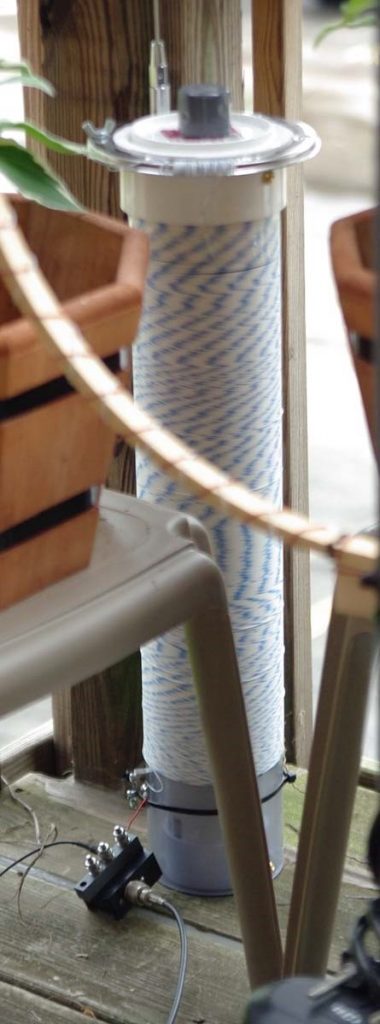
Photo of installed EF-SWL at the bottom of the HWV with coax at the output, the red magnet wire input on top, the middle post for the counterpoise wire, and the coax shield post is unused.
The HWV antenna now has 600 feet of 26 awg teflon wire on the outside PVC, an inside 3 inch PVC “sleeve” with 102 Russian ferrite rods, a 56 inch stainless steel whip at the top, and one inch hole through the center to accommodate the 7 foot PVC mount to my carbon fiber photo tripod when I take it camping again.
So, I am on a new quest to understand counterpoises, how to actually TUNE them and, hopefully, how to use them to increase the performance of shortened antennas like my HWV (something about reducing the dB loss incurred by shortening….). A second result I hope will be how to use the counterpoise to keep signal-to-noise ratio high at the same time (maybe with this used $100 Dentron Super Tuner bought at Hamvention?).
Also bought at Hamvention (thanks Thomas W. for the tip!!) and installed Bonito’s Galvanic Antenna Isolator GI300.
If input directly to the input of the radio, led to more reduction in noise and signal!! Too much actually, so I took off my Super RF Choke and now I had a better result compared to the EF-SWL with the RF Choke (slightly cleaner sound with less hissy noise). Apparently, the GI300 completely isolates the coax shield, better than my homemade choke! The requirement is to use coax from the feedpoint and not bare wire. I then placed a few clamp-on ferrites I bought from eBay to help with slightly higher frequency choking of the shield at various places on the feedline.

Photo of GI300 on radio with NO extra coax lead into the radio at right (Thanks to Dennis Walter of Bonito for that tip)
Before Hamvention, I wanted to try out AM broadcast. I wanted to know more about this “FSL” antenna a well-known eccentric from Ireland (Graham Maynard FSL) developed before he passed away a few years later. So read up and bought a whole bunch of ferrite rods and tried different configurations. Well, my particular design did not work all that well because I did not follow directions for winding wire into a balanced design. So, I added all those ferrite rods to the 2 foot HWV (inside a 3 inch thin-walled sewer PVC pipe). The antenna is louder down to about 3 MHz with a stronger signal (including noise) than without. I do not have measurements, and find it too time consuming to document. Maybe one day, I will compare and document by sliding the ferrites out on the 3 inch PVC and measure actual signal levels. The ferrite sleeve seemed to pick up MORE noise and radio signal than without it. So, if you need more signal strength in a small package below 7 MHz, then the idea seems to have merit. But since it increased noise as much as radio signals, it has limited usefulness to me. I do have another project where I will put ferrite bars onto a tuned medium wave loop antenna (Tecsun AN100) that is much more portable and directional. The bars and loop were both relatively inexpensive from eBay. The ferrites change the tuning lower, so I have to figure out how to make it tune higher again…….
Summary
Evolving understanding of dealing with major problems like overwhelming noise and limited space have led to unexpected additions to my SW Listening Station:
- A 2 foot long, 4 inch diameter helically-wound-vertical antenna (HWV) with way too much wire on it (and now inserted with 102 160mm Russian ferrite rods on a 3 inch diameter “sleeve”). Originally built because of its portability. Can now be mounted on a carbon fiber photo tripod with a 7 foot 3/4” PVC pipe through the center length
- A magnetic balun from LNR (designed by Parfitt) attached at the feedpoint of the antenna
- A proprietary galvanic isolator from Bonito attached right at the radio’s antenna terminal
- A “boat anchor” Dentron Super Tuner attached to the HWV feedline to help tune it
- An unfinished MW loop antenna with more ferrite bars
- An unused, homemade toroidal Super RF Choke
- Clamp-on ferrites everywhere in proximity on wires and power leads
- Re-arranged power strips and wires as needed for easier shutoff in functional groups
For shortwave, I still pick up mostly noise on many bands. With the uncalibrated S-meter on the ICF-2010 – 49 meters is around S1 (before about S3). 31 meters is MUCH improved and is now listenable to stronger stations (S2 instead of S7 noise!). Even 19 and 16 meters is improved from S6 to S7 down to about S3 now – noise still too annoyingly loud to understand any language being spoken however. And forget about DXing from this location! Will have to go camping again soon.
BUT, listening now to Voice of Greece, Radio Nacional Brasilia, or Radio Romania International is a much cleaner sounding experience than just a couple of months ago. They are there to re-discover and appreciate, even though many speak a foreign language and I do not understand a word they are saying! Also, there is the odd observation (like just this morning), that I can actually learn to enjoy listening to Country Music if it is the unique sounding Australian flavor!!
Do I miss cable TV?? Not a bit!!
Future investigations
- Employ the Dentron Super Tuner in various configurations to find any improvements (currently attached to the coax of main feedline from the EF-SWL, it is helping tune different SW bands (not sure why it helps, does not make sense, must be a mismatch between coax and balun)
- Obtain old book(s) on counterpoises
- Get a Linear DC power supply for use with all the EVIL RF-spewing devices that use 5 volts. Maybe this one: (Tekpower 3Amp Linear)
- Replace any cheap/old RG58 cables with LMR-240 or similar
- Finish the AM loop w/ferrites so I can take it places
- Perhaps an ultra low-noise outdoor amplifier for the HWV, depends on counterpoise experiments: (Wellbrook ALA100M-2) (I don’t want to spend that much money now)
- Somehow use a noise antenna with a better phaser: (DX Engineering NCC-1) (gulp, don’t want to spend THAT much money now also!!!)
- Get some relief from background noise using a really robust noise blanker. I don’t want to spend on the portable radio, would rather get something like the Bonito 1102S or an ELAD model both supposed to have excellent audio quality and excellent DSP noise blankers. But that means getting a cheap laptop to run it and replacing the Sony. MOAR big bucks…. but not right now
- Maybe a real loop antenna, BUT it has to be remotely tunable and remotely turnable and small enough to HIDE. MOAR big bucks, sigh….
TomL from noisy Illinois, USA
Many thanks for sharing your experiences, Tom! Also, it was great meeting you at the Hamvention this year.
I must say that there is something to be said for brute-force experimentation when it comes to mitigating radio interference. I hope you keep us posted as you continue to experiment and improve upon your unique listening system.
Guest Post: Communications Service Monitors – A Radio Hobbyist’s Perspective
Many thanks to SWLing Post contributor, Mario Filippi (N2HUN) for the following guest post:
Communications Service Monitors – A Radio Hobbyist’s Perspective
Mario Filippi, N2HUN
(All photos courtesy of author)
Over the past few decades I lusted after a communications service monitor for my radio hobby but prices were always prohibitive; several thousands of dollars for a new model and tens of thousands for high-end ones. Not being a working professional in the communications field made it difficult to justify purchasing a piece of equipment whose price tag rivaled a down payment on a house. So, fast forward a few decades later and now life and times have fortunately changed for the better; the house is paid for, the job is secure, the income is finally steady, life is good financially, and to boot many of these older service monitors manufactured by Ramsey, Motorola, Wavetek, IFR/Aerotek, Cushman etc., are currently being sold on the pre-owned market at a fraction of their original decades-ago hefty prices. These service monitors are finally in financial reach of electronics hobbyists who will find many uses for these former electronic workhorses that toiled many years in the industry and now, in their golden years are being retired and becoming available for a second life via reuse/reincarnation/repurposing/reinvention.
So what exactly is a communications service monitor, or “service monitor” as the folks in the trade refer to? Well it is an instrument for servicing AM and FM radio equipment, although some units also have the ability to service SSB equipment. The service monitor is basically a highly accurate and precise receiver and low-power signal generator all in one allowing a technician (or electronics hobbyist) to perform service, repair, or alignment of radio equipment. Most of us have had the experience of owning a malfunctioning radio whether it is an AM or FM broadcast radio, two-way radio such as a CB (Citizen’s Band) radio, pager, or a ham radio transceiver, and that is where a service monitor proves its value and utility because now you, the hobbyist, can perform the work yourself.
As a radio enthusiast (shortwave, ham radio, satellite communications) for over half a century, I’ve definitely owned more radios than shoes; everything from AM, FM, shortwave receivers to CB radios to ham transceivers, all in different stages of health and vintage. For years I relied on standalone RF signal generators, audio generators, frequency counters, and CTCSS decoders to aid in rehabbing, troubleshooting, and aligning each of the many units that paraded past my radio shack. Then one day a friend showed me his service monitor, the Ramsey COM3010, another venerable workhorse still in production, and it was a defining moment; the time had come to invest in one.
My Ramsey COM3, purchased second-hand from an Internet auction site for $400.00 is a no frills, basic unit without the features found in more sophisticated service monitors having built-in oscilloscopes, spectrum analyzers, frequency sweeping ability, and frequency scanning ability. The COM3 was in production from the late 1980’s to around 2003 at a price of around $2500 (ca. 1989) and was considered a workhorse in its time, weighed 13 pounds with the internal battery, and was easily luggable from site to site. It covers from 100 KHz to 999.999 MHz and has become an invaluable tool in my radio shack for measuring a transmitter’s operating frequency and deviation, measuring receiver sensitivity, S meter calibration, and checking CTCSS tones on my two way VHF/UHF radios. My unit evidently had an easy former life as the only needs were to replace the internal battery, perform an external cleaning, check transmitter and receiver accuracy and check accuracy of the internal audio generator. Interestingly, Ramsey Electronics (www.ramseytest.com) still services and calibrates COM3s.
So, if you’ve been dreaming of owning your own communications service monitor either as a hobbyist or small repair radio shop proprietor then start looking as there are plenty of used units out there; you’ll pay top dollar when buying from a commercial vendor but at least you’ll get some form of warranty. If instead you travel the same road I did, via an Internet auction site, there’s lots more risk involved, but the plus is you’ll save big if you do your homework by checking past auctions, seller feedback scores, and determining what price the market is bearing by looking at the winning bids. In closing, the COM3 owner’s manual is available on line by doing a simple search, and a review of the Ramsey COM3 by Larry Antonuk which appeared in the August 1989 issue of 73 Amateur Radio Magazine is also available as a free download.
Mario, thank you for another brilliant guest post! I always learn something new from your articles. By the way: I have that same Nye Viking straight key–it obviously pairs beautifully with the Tempo One!
Ron’s Bluetooth solution for robust shortwave radio audio
Many thanks to SWLing Post reader, Ron Wagner, who writes:
Thanks very much for your informative SWL pages. With the, seemingly, shortsighted, contracting world of SW broadcasters, you keep our interest alive!
Recently, you called attention to Jay Allen’s modification and installment of a new speaker for the Satellit 800. Not quite ready to open up my 800, even with a scratchy volume pot, I setout to find another way, not only for the 800, but for all of those older radios that “SWLers” love.
Walla, a Bluetooth TX/RX device (by JETech Designs) which connects to the headphone or external speaker jack of the radios. Then, with a Bluetooth speaker, put the TX/RX device on TX and pair with the speaker, and your off to an audio improvement in all of your radios.
Attached, see the TX/RX with my 800, G3 and ICF 7600 and my outdoor Bluetooth speaker. With today’s Bluetooth speakers, you can spend to suit your budget and ears. Now, I’m on my way to find Bluetooth headphones to pair with the Bluetooth transmitter.
What a simple and relatively affordable idea, Ron. I had been considering the purchase of a Bluetooth receiver for the AUX in port in my minivan’s audio system. If I understand correctly, this one unit can both send and receive Bluetooth audio. Very cool!
I could also imagine someone placing their shortwave portable outside–on a patio or deck–away from indoor radio interference, and using the Bluetooth link to port audio to a speaker inside the house. You wouldn’t have tuning control (and you’d have to remember to bring the radio inside if rain is in the forecast–!), but you would have audio control.
Looks like this JETech receiver/transmitter is available on Amazon or directly from JETech. Thanks again for the tip, Ron!
Video: Repairing, restoring and modifying a Sony CRF-320
Many thanks to SWLing Post contributor, Ken McKenzie, for sharing the most comprehensive video you’ll ever find on restoring the Sony CRF-320 receiver:
Click here to watch on YouTube.
Make sure you check out Mr. Carlson’s YouTube channel, Mr. Carlson’s Lab where you’ll find repair videos ranging from solid state to tube gear.
Thanks for the tip, Ken!
The new LNR Precision LD-11 transceiver is essentially general coverage
A couple weeks ago, LNR Precision sent me their new LD-11 Digital Direct Conversion QRP transceiver on loan for review.
The LD-11 is basically a small, tabletop SDR transceiver. It’s like a miniature, simplified version of the Icom IC-7300 I’ve also been evaluating.
The LD-11 is an all-mode and all-band transceiver–meaning, it includes SSB, CW, CW-R, Digi, AM and FM modes on all amateur radio bands (160 – 10 meters).
Though the LD-11 isn’t advertised as having a general coverage receiver, it will indeed tune the entire HF band.
You do this by entering the LD-11’s administration mode. LNR describes this in the LD-11 product manual, but suggests you contact them for help the first time you do this. In the admin panel, you’ll find functions that allow you to set the band edges on each amateur radio band.
For a preliminary test of broadcast reception, I moved the lower band edge of the 30 meter ham radio band to 8.2 MHz.
After saving the settings and re-starting the LD-11 in normal operation mode, I could then tune the entire 31 meter broadcast band on the LD-11.
Hypothetically, you could either widen each amateur radio band to include adjacent broadcast bands, or you could simply set one of the ham bands to include the entire HF spectrum. To make it easier to navigate and tune through the bands, I’m choosing the former method over the latter.
Since the LD-11 has a proper AM mode, broadcasts sound great–especially via headphones!
Proper AM filters for broadcast reception!
Better yet? The AM filter width can be widened to an impressive 9.6 kHz! Woo hoo!
The LD-11 has four filter slots: F1, F2, F3 and F4.
The F1-F3 slots can be set to a fixed user-defined widths (common widths are default).
F4 can be altered to any available filter width without having to enter the admin mode of the transceiver. Simply press the “F” (blue function button) and the FILTER button simultaneously and use the encoder/tuning knob to specify the filter width in .1 kHz steps. Pressing the F and FILTER button simultaneously again, will save your filter width for the F4 position.
I’ve been using the F4 filter position for widths between about 8.2 and 9.6 kHz in AM.
It’s still early days with the LD-11, but I’m enjoying this little transceiver immensely. It reminds me of one of my favorite QRP transceivers of yesteryear: the Index Labs QRP Plus (though the LD-11 is much smaller, more versatile and has a much better front end than the QRP Plus!).
LNR Precision sold out all of their first run LD-11 units within moments of having announced availability. I’m willing to bet they’ll bring a few LD-11s to the upcoming Dayton Hamvention, though.
Check inventory status and view LD-11 details on LNR Precision’s website.
SDRplay: Updated ADS-B for Raspberry Pi 2 and Pi3
Many thanks to Jon Hudson with SDRplay who shares the following announcement:
We now have an updated beta version of ADS-B for both the Raspberry Pi 2 and 3. This is based upon the 16bit Mutability version of dump1090 developed by Oliver Jowett and unlocks the full 12 bit performance of the RSP1. People should see a significant performance improvement over the dump1090_sdrplus version, which was based upon 8 bit code. The latest beta version can be downloaded in binary form from http://www.sdrplay.com/rpi_adsb.html .
Should anyone have questions or feedback, please contact [email protected]
Section 1 is how to load a brand new image onto an SD card
Section 2 should be straightforward – 2 commands – one to get the software and another one to run it.
Though I don’t live in a metro area with a lot of air traffic, I am often in the flight path of a couple major airports. I’ve been looking for a simple way to try ADS-B (and ACARS). As soon as I locate a dedicated monitor and keyboard for my Raspberry Pi 3–and a little dedicated time–I will give the ADS-B app a go. Thanks again, Jon!

